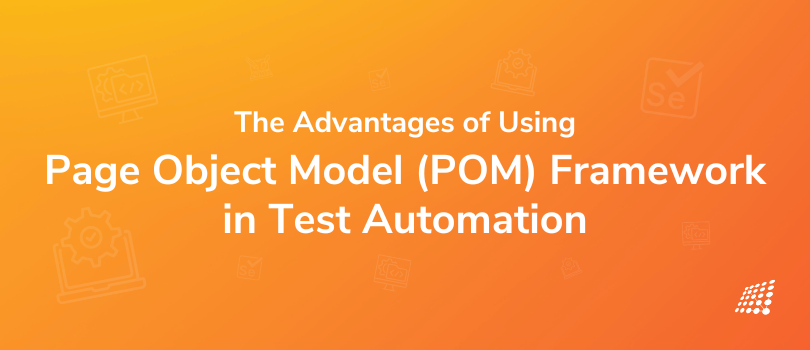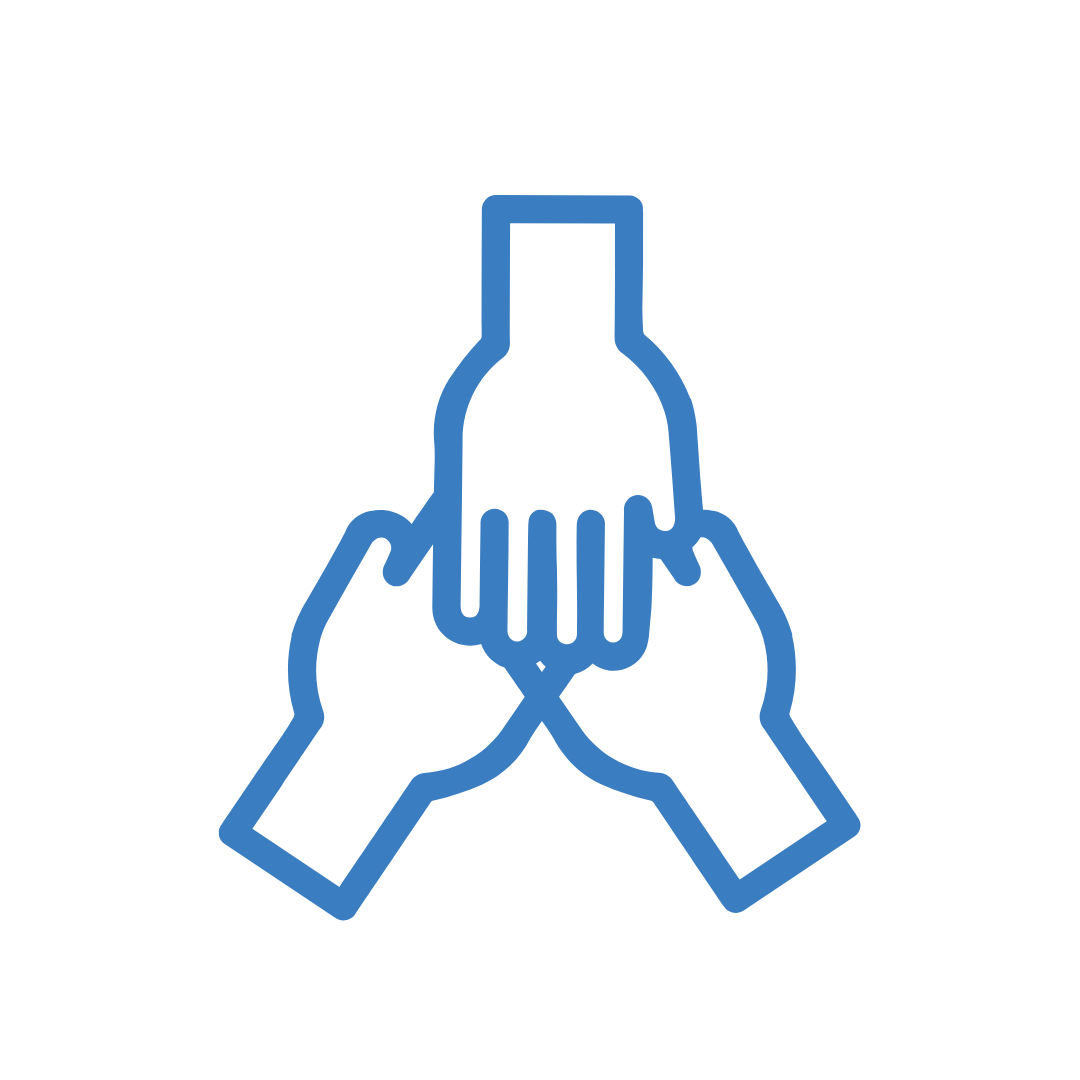The Advantages of Using the Page Object Model (POM) Framework in Test Automation

As software development advances, so too does the need for efficient and effective testing. Fortunately, there's a solution that comes into play perfectly at this time to test your software products - test automation. By automating repetitive and time-consuming tests, software development teams can lower the chance of errors and raise the overall quality of their software products. And when it comes to test automation for web application testing, one of the most widely used methods is the Page Object Model (POM) framework in software testing.
If you're not familiar with POM, you're seriously missing out on a path-breaking tool that can ease and streamline your test automation process. In this blog post, we'll take a look at the benefits of using Page Object Model in test automation, the POM framework for web application testing, and share some best practices for implementing it effectively.
What is the Page Object Model (POM) Framework?

First, let's understand what is the Page Object Model framework in test automation. As a popular automation framework, the Page Object Model (POM) has proven to be an effective approach for designing and implementing test automation. So, how does POM benefit test automation?
The Page Object Model (POM) automation framework is a design pattern that is used in test automation to help organize and structure automated tests. In other words, it helps organize test automation code into a more modular and reusable structure. With POM, each page of a web application is represented by a class, and the elements on that page (such as buttons, links, and text fields) are represented by variables or methods within that class. This allows test scripts to interact with these elements in a more organized and efficient way.
This framework separates the application under test (AUT) into multiple pages, each of which is represented by a Page Object. The Page Object is a class that contains all the properties and methods that represent the corresponding page on the AUT.
Three key components of the POM framework
Now that you know what is Page Object Model framework, let’s look at what are the three key components of POM framework.
The POM framework is built around three key components: page classes, element classes, and test scripts.
- The page classes represent each page of the web application, and contain the variables or methods that represent the elements on that page.
- The element classes represent each individual element on a page, and contain the methods and attributes that allow test scripts to interact with those elements.
- Finally, the test scripts themselves utilize the page and element classes to execute tests on the web application.
Advantages of using the POM framework in Test Automation
So what are the benefits of POM in test automation?
Maintainability

The POM framework makes the automation code more maintainable by reducing the coupling between the test code and the AUT. With the POM, the test code interacts only with the Page Objects, and any changes made to the AUT are isolated within the Page Objects. This approach allows developers to make changes to the AUT without affecting the test code, making the automation code more maintainable.
- With the POM framework, test maintenance becomes much easier.
- Each page and element is represented by a class, changes to a page or element can be made within that class without affecting the rest of the test script.
- Inevitably, it means tests can be updated and maintained with minimal effort.
Increased Reusability

Another reason why is POM framework important in test automation is because the POM framework allows for the reusability of code. Since each page is represented by a Page Object, the same Page Object can be reused in multiple tests. This means that since the elements on each page are represented by variables or methods within their respective page classes, test scripts can easily interact with those elements across multiple tests.
- This means that changes to a page or element only need to be made in one place.
- These changes will be reflected across all tests that use that page or element.
- Using this approach avoids the need to duplicate code
- As a result, the automation code becomes more efficient and easier to maintain.
So, now that you know what is the impact of POM on code reusability, the POM framework can definitely help you achieve your goal of improving your code reusability in test automation.
Scalability

How the POM framework makes automation code scalable? When new functionality is added to the AUT, a new Page Object is created to represent the new page. The test code can then be updated to use the new Page Object. This approach makes it easier to scale automation code as the AUT grows in complexity.
Readability

The POM framework makes automation code more readable. How does POM framework improve automation code readability you ask? Well, since the Page Objects represent the pages on the AUT, the test code can be written in a more natural and readable format. This approach makes the automation code more understandable and easier to maintain. As a result, the benefits of Readable Automation Code are vast!
- It improves collaboration among team members since the code is easier to read and understand.
- Readable automation code helps in identifying errors and debugging issues quickly, which in turn reduces the overall testing time.
- It also simplifies the task of maintaining the codebase, as changes can be made more easily and quickly without requiring a deep understanding of the underlying code.
Testability

The POM framework makes the AUT more testable. How does POM improve the testability of AUT? Since each page is represented by a Page Object, the test code can interact with the AUT in a more natural way. This approach makes it easier to write automated tests that are reliable and maintainable.
Improved Collaboration

Since the POM framework separates page and element classes from test scripts, it works in improving collaboration with POM Framework. For instance, it can also help improve collaboration between developers and testers. Developers can focus on building the application and updating the page and element classes as needed, while testers can focus on creating and executing test scripts. This can help reduce the amount of time spent on testing and improve the overall quality of the software product.
Better Code Organization

The POM framework also helps improve the organization of test code and provides the benefits of modular code.
How does POM improve the organization of test code?
By separating page and element classes from test scripts, code becomes more modular and easier to read. This can make it easier for team members to collaborate and maintain the codebase.
Best Practices for Implementing the Page Object Model (POM) Framework

What are the best practices for implementing the POM framework?
Naming Conventions

When implementing the POM framework, it's important to use consistent and descriptive naming conventions. Naming conventions in the POM framework can make the codebase easier to read and maintain.
Proper Element Identification

When creating element classes, it's important to use proper identification techniques to ensure that the correct element is targeted. This can include using unique IDs, classes, or other attributes to identify each element.
Effective Locators

In addition to proper element identification, effective locators can help improve the efficiency and accuracy of test scripts. This can include using Xpath or CSS selectors to target elements, rather than relying on hardcoded coordinates or other less reliable methods
In conclusion, the POM framework is a powerful tool for designing and implementing test automation that can benefit not only Automation QA but also UAT testers. Once you figure out how to implement POM framework effectively, you can leverage its numerous advantages, including maintainability, reusability, scalability, readability, and testability.
Using the POM framework, an Automation QA expert and UAT tester can create efficient, reliable, and maintainable automation code, which will improve the quality of the software under test. Moreover, POM's reusability feature enables UAT testers to reuse the same Page Objects across different testing scenarios, resulting in faster and more efficient testing

Collaborative AI: A Guide to the Future of Teamwork and Productivity

Mastering SOLID Principles in Software Development with Real-World Analogies - Part 2


